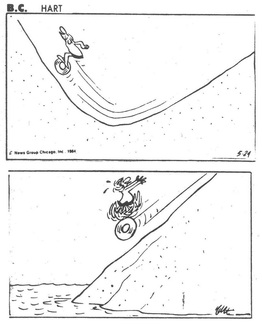|
Home >> AP Physics I >> Energy
|
|
Energy is an abstract concept that underpins all of science. Fundamentally, it is the ability to do work. Energy comes in many forms, however, at AP level the focus is mainly on mechanical energy, which is the sum of the kinetic energy and the potential energy of an object. The key part is that the energy can be transferred between kinetic and potential energies.
Central to this topic is the idea of WORK. As the industrial revolution gathered steam (so to speak) it became necessary to quantify the amount of effort required to do a task such as winching a bucket of coal up from a coal mine and the amount of fuel required to do this task. The concepts that we use today stem from this need. Work is simply the force applied over a distance - i.e. how hard you are pushing something multiplied by how far you have have pushed it. If the force is as at angle, then only the component of the force that actually moves the object is important. Power is a measure of the rate of doing this work. |
In order to do work, you need energy. If the energy transfer is 100% efficient then the energy required is equal to the work. If energy is stored it is referred to as potential energy. There are two forms of potential energy that we cover in this unit; gravitational potential energy, which is the work done in lifting an object against gravity, and elastic potential energy, which is work done to stretch a spring. The energy associated with a moving object is called kinetic energy and is defined as the work done to stop it.
- 16 - 24% exam weighting
- 19 - 22 lessons
